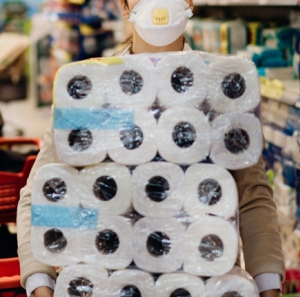
TISSUE: Panic Buying Not Just a Local PhenomenonBy Tim Woods, Managing Director of IndustryEdge  Panic buying is not a peculiarly antipodean pursuit. Latest information tells us that across the world, where people have the means, they have built personal inventories of toilet paper and other tissue products.
Panic buying is not a peculiarly antipodean pursuit. Latest information tells us that across the world, where people have the means, they have built personal inventories of toilet paper and other tissue products.
Dec. 3, 2020 - Panic buying, hoarding or establishing a "personal inventory," however you want to describe it, the buying of tissue — especially toilet paper — has been a strange feature of the 2020 pandemic. In most countries — Australia and New Zealand are good examples — the only reason there were shortages of these products was because of the panic buying. Normal patterns of consumer behavior would easily have been met by local producers and importers. It may be a comfort (or maybe not) that panic buying is not a peculiarly antipodean pursuit. Latest information tells us that across the world, where people have the means, they have built personal inventories of toilet paper and other tissue products. The pandemic has sharpened some already clear trends in consumer behavior, as we heard earlier this month. A recent Tissue World conference (held online) heard from a number of tissue companies about the future trends that can be discerned from this period of peculiar consumer behavior. Here are some take outs: Retail
Supply Chain
Sustainability and Innovation
(The Managing Director of IndustryEdge, Tim Woods, was a panelist in the opening session of Tissue World's Digital Days.) There is a lot for a business engaged in providing consumer products/services to consider, but essentially it boils down to this: expect to deal more directly with consumers, who will require better service and faster delivery than ever before and will not tolerate failures in the supply chain — right from the fiber source all the way to the smile on the face of the delivery driver dropping off their personal inventory. This article is available in its entirety, along with graphs, on Forest2Market's website within its blog page: www.forest2market.com/blog Forest2Market provides pricing data, supply chain expertise and strategic consulting services to participants in the global wood and fiber supply chain. To learn more, visit www.forest2market.com. SOURCE: Forest2Market |